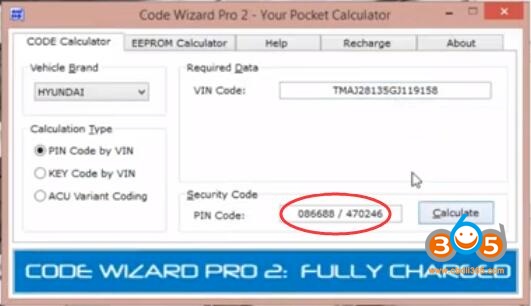

- #HOW TO VIN TO PIN HOW TO#
- #HOW TO VIN TO PIN SERIAL#
- #HOW TO VIN TO PIN FULL#
- #HOW TO VIN TO PIN SOFTWARE#
- #HOW TO VIN TO PIN DOWNLOAD#

Insert the micro SD card into a computer and open the mounted boot drive. It is alright if you’re not using a fresh installation. Enabling UART Mode on the Raspberry PiĪt this point we haven’t connected to our Raspberry Pi yet.
#HOW TO VIN TO PIN SOFTWARE#
With the computer software ready to go, we need to make some change to our Raspbian setup. When it comes to Linux and Windows, head over to the Prolific and SiLabs websites to get what you need, or get the specifics from Adafruit. Installing both is safe, but if you know exactly what chipset you’re using, then go for the specifics.
#HOW TO VIN TO PIN DOWNLOAD#
On Mac, download the following chipset drivers: I’m using a Mac, so I won’t be of much help in the realm of Windows and Linux, but from what I understand, the process isn’t too different. Using the Terminal or PuTTY on Windows isn’t enough to get the job done. When working with the GPIO, you’ll need special drivers. Preparing Your Computer for Terminal Emulation No need to go through the other steps after installing Raspbian Linux.
#HOW TO VIN TO PIN HOW TO#
If you haven’t already flashed your Raspberry Pi micro SD card, you can see how to do this here. This guide won’t show you how to solder your own headers, so if you’re not comfortable with the task, you should probably stick with a standard Raspberry Pi.

They are found below with a link to purchase them: There are only a few requirements towards being successful with this project.
#HOW TO VIN TO PIN FULL#
Let’s break down what the full specs of what we’ll need to be successful. You’ll also note the cable we’re going to be using to connect. The pin configuration is the same for all Raspberry Pi devices regardless the shape, size, or version. In the above images you’ll see the GPIO pins on various Raspberry Pi units. I soldered mine on, and as a first time solderer, it wasn’t so bad. I’ll be making a few references to my Raspberry Pi Zero’s GPIO pins, but you should note that in most scenarios, the Pi Zero does not ship with a GPIO header attached. It didn’t exactly work for me, but it put me on the correct path. First off, this was inspired by the Adafruit guide for using a console cable. Going forward, you should note a few things.

#HOW TO VIN TO PIN SERIAL#
You can actually connect to the Raspberry Pi and Pi Zero through the available GPIO pins with a USB to TTL serial cable. I wouldn’t necessarily call it a better way, but more of another option towards Raspberry Pi configuration. Is there a better way to connect to and configure these Internet of Things (IoT) devices? Recently I had written about connecting to a Pi Zero through a standard micro USB cable and SSH, which wasn’t difficult, but it required a few potentially time consuming steps. Previously I had written about using a Raspberry Pi as a headless unit, but in that tutorial there was an ethernet requirement. This includes configuration of a Raspberry Pi and the smaller Pi Zero. Alternately, you could get an integrated switching regulator (possibly like the 3.3V version of this one from Recom Power, also available from Digi-Key) to produce the 3.3V to supply the processor directly from a wide range of input voltages.Įdit to add: The VIN pins are all connected together, it does not matter which one of them you use.When it comes to configuring a Raspberry Pi for the first time, there are a few options, many of which can be a pain. If you are concerned about efficiency - and if you are running on battery power you should be - it would be much more efficient to supply the pyboard with 4.5V from 3 AA batteries. The regulator can nominally accept an input of up to 10V, so connecting a 9V battery directly should be fine.ĭo note that this will be fairly inefficient: the MCP1802 is a linear regulator, meaning that if it is supplying 100mA at 3.3V, then it is drawing 100mA at 9V and wasting 570mW of power for the 330mW it is providing. However, strictly speaking you don't even need that, because the pyboard has an onboard regulator (the MCP1802/3.3V) to bring the 5V USB power down to the 3.3V needed by the processor. The correct way to bring the voltage down is to use a regulator, of which several different types exist. A resistor voltage divider is not an appropriate way to reduce the voltage from a 9V battery to the pyboard the voltage that you get out of the resistor divider will be highly dependent on the amount of current that you draw.


 0 kommentar(er)
0 kommentar(er)
